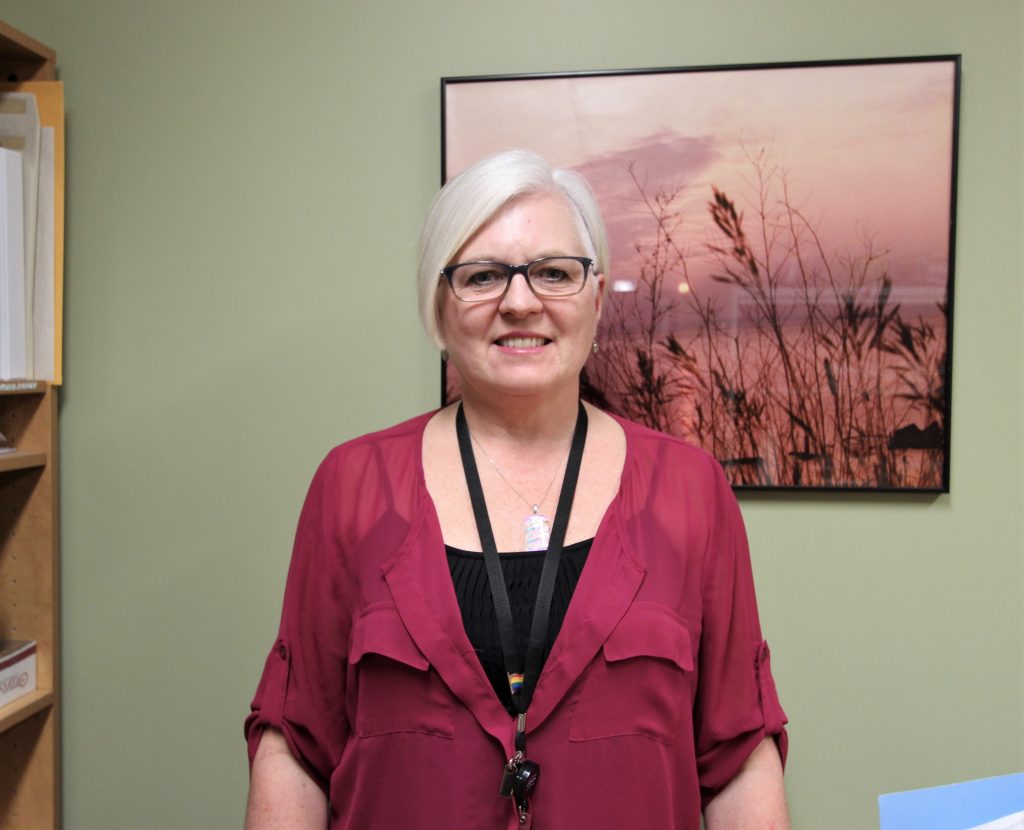Heart Month Profile: Kathy Bogacki, Regional Cardiovascular Triage Nurse, Cath Lab
by Marcello Bernardo
 Kathy Bogacki, a Regional Cardiovascular Triage Nurse in our Cardiac Catheterization Lab (Cath Lab).
Kathy Bogacki, a Regional Cardiovascular Triage Nurse in our Cardiac Catheterization Lab (Cath Lab).It’s Heart Month, and we’re highlighting staff and departments at Thunder Bay Regional Health Sciences Centre (TBRHSC) who play a vital role in cardiovascular care. Today, we’re sharing some Q&A with Kathy Bogacki, a Regional Cardiovascular Triage Nurse in our Cardiac Catheterization Lab (Cath Lab).
What does it take to be a Regional Cardiovascular Triage Nurse in the Cardiac Catheterization Lab (Cath Lab)?
Organizational skills and the ability to do several things at once help me to succeed in this triage role. I’ve been a Registered Nurse for many years have varied experience in surgery, cardiology, intensive care and the Cath Lab. This experience supports me to help guide patients through their individual referral processes outside of Northwestern Ontario, for cardiac surgery, angioplasty, ablations, internal defibrillators, valve replacements, congenital heart problems and transplant workups.
What is unique about your role?
I am the only person in this role in Northwestern Ontario which gives me great pleasure to serve the residents of this region. I am the personable type and value being able to interact at the bedside with patients in the hospital. I interact with patients and their family members through phone calls to decrease their anxiety about their upcoming travel and appointments. I also participate in rounds throughout the hospital to support and guide staff with the questions they have for their cardiology patients.
What inspired you to work in cardiac care?
My first love was surgical nursing and to have the experience of nursing with the Cath Lab team provided me the opportunity to enjoy a similar experience of an operating room setting. While many people know about the serious medical condition of a heart attack, in the Cath Lab we call them “STEMI’s” and we have a “call team” ready to react when a Code STEMI is activated. Being a part of that call team was a gratifying and rewarding experience. It allows us to provide direct care to many anxious patients who wondered if their treatment would be successful. Having the opportunity to work directly with patients has provided me with the skills to work in my current triage role. I am able to educate nurses and family doctors, patients and families; not only here at TBRHSC, but across our entire region as well.
How does your role impact patient care?
I am only a phone call away from our regional partners to help triage patients from their home towns and back. I am able to provide information for the health care professionals as well as the patients. It is stressful being told that you need to fly to southern Ontario for a procedure. I am able to ease that anxiety by providing information about the upcoming surgeries or procedures, details about the hospital they’re being sent to and many others. I can also provide information about accommodations, flight suggestions and specific details of what patients and families can bring with them for a positive experience. The COVID-19 pandemic has prevented many family members from traveling with their loved ones. If I can provide answers to their questions before they depart, then that will provide a smoother transition for the patient.
On the concept of practice what you preach, do you have any personal tips on how to stay heart healthy?
Try to maintain a little balance with foods and exercise and make sure you don’t forget to laugh. But as I tell many patients “Be a little bad, the good die young”.